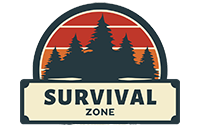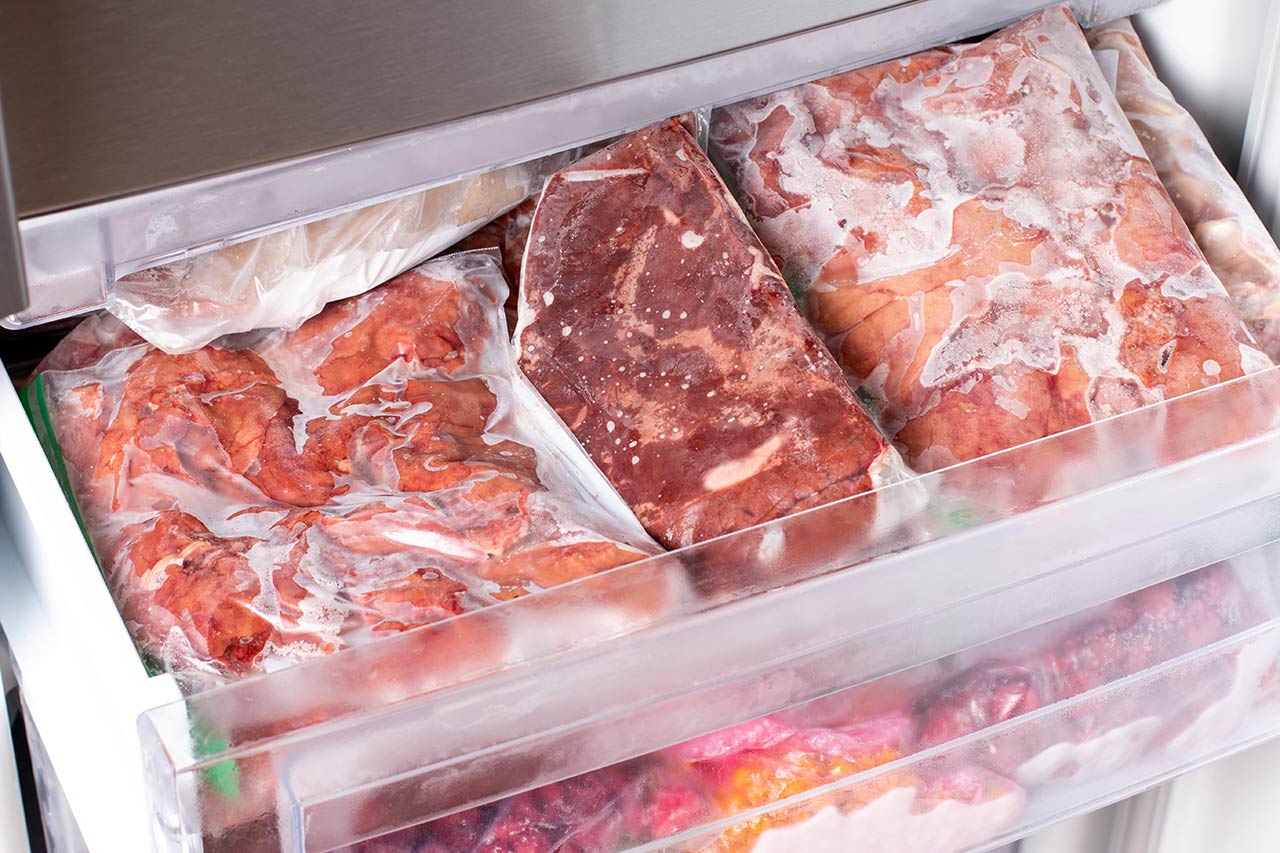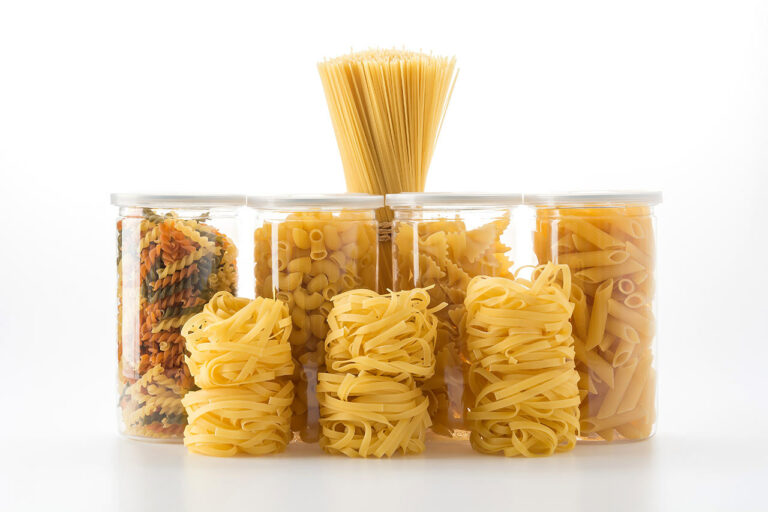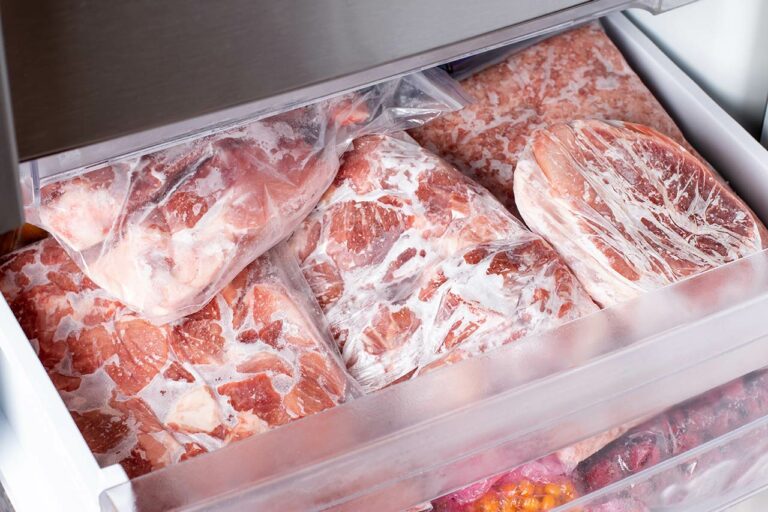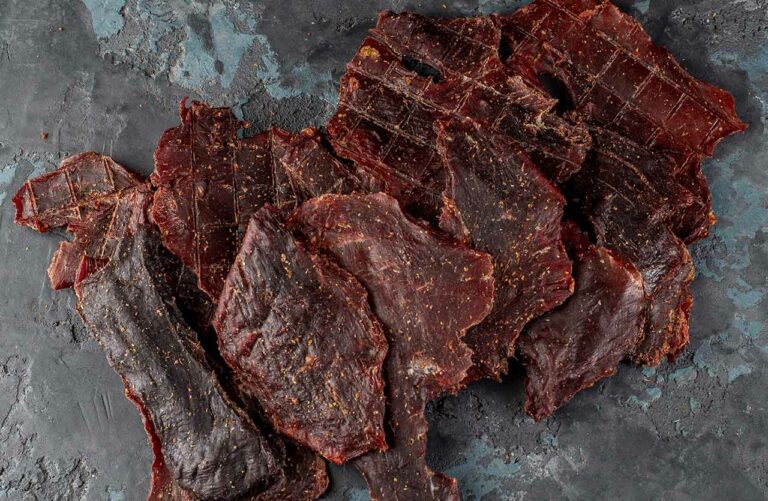How To Store Deer Meat (Optimal Storage Tips)
Storing deer meat properly is essential for preserving the freshness and flavor of the meat while preventing bacterial growth, and many factors come into play.
The size and type of your cuts, your choice of storage method, and your preparation will all determine how long you can keep deer meat in storage. The effectiveness of your freezer also plays a significant role.
Let’s talk about ways you can store deer meat to get the most time out of your supply.
The Importance of Proper Deer Meat Storage
Proper deer meat storage is crucial for maintaining the quality of the meat and ensuring food safety for you and your family. When you store deer meat correctly, you preserve its flavor, texture, and nutritional value, while preventing spoilage and reducing the risk of foodborne illnesses.
One of the primary concerns with deer meat storage is temperature control. Keeping the meat at a consistent and low temperature, below 40°F (4°C), will help prevent bacterial growth that can lead to spoilage and food poisoning. Any fluctuation in temperature or exposing the meat to warmer conditions can significantly affect the freshness and safety of your meat.
Proper storage also plays a key role in preserving the overall quality of the deer meat. When you handle, store, and package the meat correctly, you’ll minimize the chances of cross-contamination, freezer burn, and any unpleasant odors or tastes from affecting your meat. This will help you make the most of your harvest and enjoy the delicious results of your hunting efforts.
Given that deer meat is more susceptible to spoilage compared to many other meats, it’s essential to understand the different storage methods available to you. Whether you choose to refrigerate, freeze, or can your venison, each storage technique has its own set of best practices to follow. Matching the right method to your intended duration of storage and specific needs is crucial for maintaining both the safety and quality of your deer meat.
Preparing the Deer Meat for Storage
Before you even get to the storage part of storing deer meat, proper handling and preparation are crucial.
First things first, you need to cool the meat as quickly as possible after butchering. Quick cooling prevents bacterial growth and slows down enzyme activity in the muscles, which can cause the meat to spoil.
During the butchering process, handle the meat carefully to avoid cross-contamination. Always use clean knives and cutting boards, and ensure your hands are clean as well. Remove dirt, hair, and debris from the meat, as these can introduce bacteria. It’s also important to separate the meat into smaller cuts, which will make it easier to store and cool evenly.
Draining the blood from deer meat is essential in preserving its freshness and flavor. To do this, hang the carcass upside down by the hind legs, allowing gravity to help with blood drainage. You can also help speed up the cooling process during drainage by placing ice packs or bags of crushed ice inside the body cavity after gutting.
Once the meat is properly prepared, you can choose the appropriate storage method based on your plans for consumption. If you intend to consume the deer meat within one to three days, refrigeration is a suitable option. For longer-term storage, freezing or canning can prolong the meat’s shelf life.
Refrigerating Deer Meat
If you’re planning to consume your deer meat within a few days, refrigerating is a great option for short-term storage. Make sure your fridge temperature is set below 40°F (4°C) to prevent bacterial growth, as meat can spoil quickly if the temperature exceeds this range.
When storing deer meat in the fridge, it’s crucial to keep it away from other foods to avoid cross-contamination. Place the meat in a sealed container or cover it with plastic wrap to prevent contact with other items.
Keep track of how long the meat has been in the fridge using a simple system, like dating the container with a piece of masking tape and a permanent marker. The shelf life of refrigerated deer meat typically ranges from 1 to 3 days. If you plan to store the deer meat for longer, you should consider other storage methods like freezing or canning.
Defrosting
Your refrigerator is also the best place for your deer meat to defrost. If you’ve frozen your deer meat, you should plan ahead and allow it to thaw in the fridge for a couple of days (approximately 2 days for a pound of meat). This will ensure a consistent quality when you finally cook your venison.
Freezing Deer Meat
Freezing is one of the best ways to preserve venison for future meals. It will prevent spoilage for many months when done properly, ensuring a long-term supply of meat.
Like when preparing deer meat for refrigeration, cleanliness and hygiene are crucial when handling deer meat for freezing. After field dressing and processing the meat, you’ll need to cool it promptly. Aim to do this as soon as possible to maintain the quality of the meat and prevent bacterial growth.
Once the deer meat is cool, you can prep it for the freezer. Wrap each cut of venison in plastic wrap, ensuring a tight seal. This helps prevent air exposure and freezer burn. After wrapping, place the meat in freezer bags.
If you have a vacuum sealer, this is an even better method for storing venison. Use the vacuum sealer to remove any remaining air from the bags, which will better protect the meat against freezer burn and extend its shelf life.
When organizing your freezer for deer meat, it’s essential to consider freezer space. Proper spacing allows for efficient circulation of cold air. It helps maintain a consistent temperature and ensures your venison will freeze evenly.
Make sure you label and date each package of deer meat before placing it in the freezer. This allows you to keep track of how long the meat has been stored and ensures you’re consuming it within the optimal time frame. Generally, venison can be safely frozen, thawed, and consumed for up to 9-12 months after initial freezing.
Canning Deer Meat
Canning is an age-old method of preserving venison that locks in the flavor and nutritional value of the meat, providing you with a shelf-stable product that doesn’t require refrigeration or freezing.
To prepare venison for the canning process, trim away any fat and cut the meat into uniform chunks or strips.
Sterilize your canning jars and make sure they are free of cracks or damage. You’ll need high-quality, wide-mouth jars for deer meat.
Once you’ve got your meat and jars ready, there are two primary methods to pack the jars: raw pack and hot pack.
Raw Pack
The raw pack method of canning deer meat involves packing the meat directly into the jars, leaving about an inch of space at the top, known as headspace.
Hot Pack
The hot pack method of canning deer requires you to lightly brown the venison chunks before packing them into jars. Once browned, you can cover the meat with boiling broth or water, again ensuring that inch of headspace.
After packing your venison, wipe the jar rims for a clean seal, place sterilized lids on top, and screw on the rings until they’re just finger-tight. It’s crucial to use a pressure canner for deer meat since venison is a low-acid meat, and the safety of the end product is paramount. You’ll process jars at the appropriate pressure for a set duration, depending on jar size.
Once you’ve processed the jars, allow them to cool and then check the seals. A properly sealed jar will have an indented center on the lid. Store these jars in a cool, dark location.
Canned venison meat can last several years without refrigeration, though it’s recommended to consume them within a year for the best flavor and texture.
Prevention of Contamination and Spoilage
When it comes to storing deer meat, preventing contamination and spoilage is crucial. To prevent contamination and spoilage of your deer meat, begin by ensuring cleanliness throughout the entire process. Keep your knives and other equipment clean to avoid introducing bacteria.
Field Dressing
Field dressing is crucial. Wear protective gloves, such as latex or nitrile, to reduce the risk of exposure to diseases. Your knives should be designated for field dressing, separate from those used for butchering. Clean your knife frequently with clean water, premoistened wipes, or alcohol swabs to avoid dragging bacteria into the meat. When field-dressing the deer, also be careful not to puncture the stomach or intestines, as this can lead to contamination. Make sure to remove all internal organs and cool down the meat as quickly as possible.
Temperature Control
Temperature control is vital during all stages of deer meat storage. After field dressing, you want to cool the meat evenly on all sides. Use a game bag to protect the meat from insects and debris while it’s in the field. Hang the carcass in a shady area to allow air circulation and promote cooling.
Store venison at a temperature between 32°F and 40°F. In warmer months, a high-quality cooler is an essential piece of equipment for proper deer meat storage, especially if you’re traveling a long distance.
Cross-Contamination
When it comes to meat storage, avoid cross-contamination by storing your venison separately from other raw meats in your cooler or refrigerator. This prevents bacteria and juices from mixing, reducing the risk of food-borne illness and food poisoning. Make sure the meat is properly wrapped and sealed, preferably using vacuum-sealed bags or plastic wrap with a tight seal. Label the packages with the date to track how long the meat has been stored.
It’s important to consider the environment when storing deer meat, since factors like temperature and humidity can affect spoilage rates.
Disease Risk
When handling deer meat, be aware of the risks associated with chronic wasting disease (CWD), a progressive neurological disease affecting deer, elk, and moose. Though there is no direct evidence of CWD transmission to humans, taking precautions when handling meat from an infected animal is always prudent. Wear gloves, avoid direct contact with brain and spinal tissues, and be sure to properly dispose of any potentially contaminated materials.
By adhering to these guidelines, you can safely handle, store, and prepare the venison you’ve hunted during the deer hunting season.
